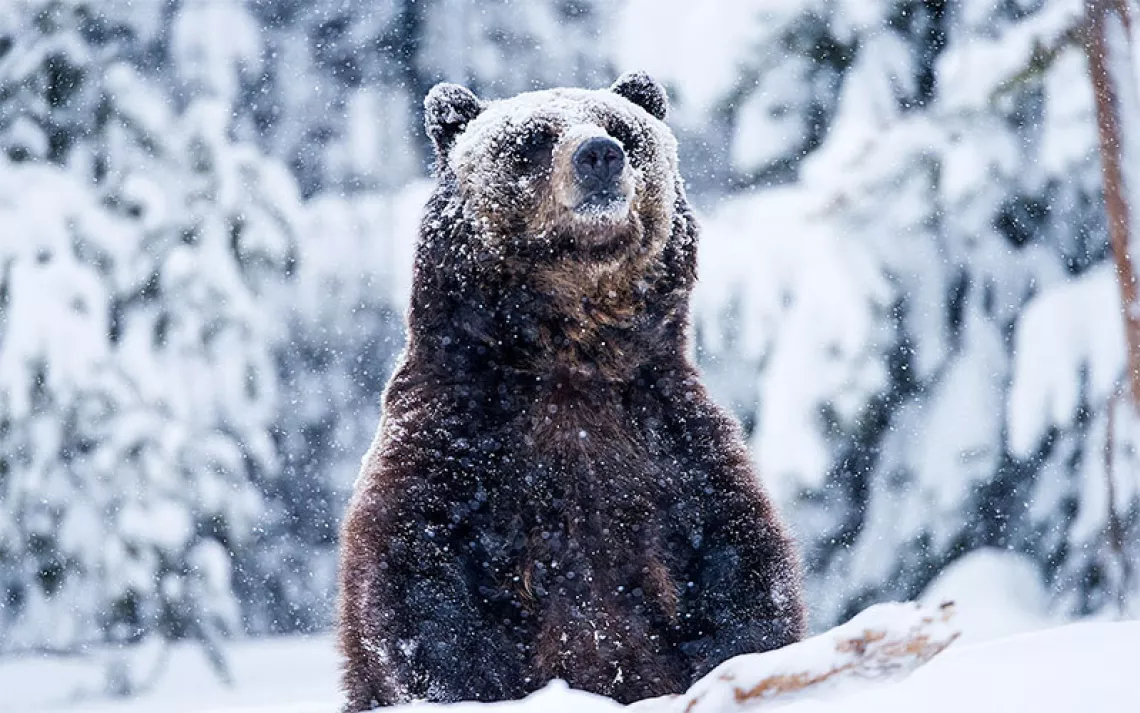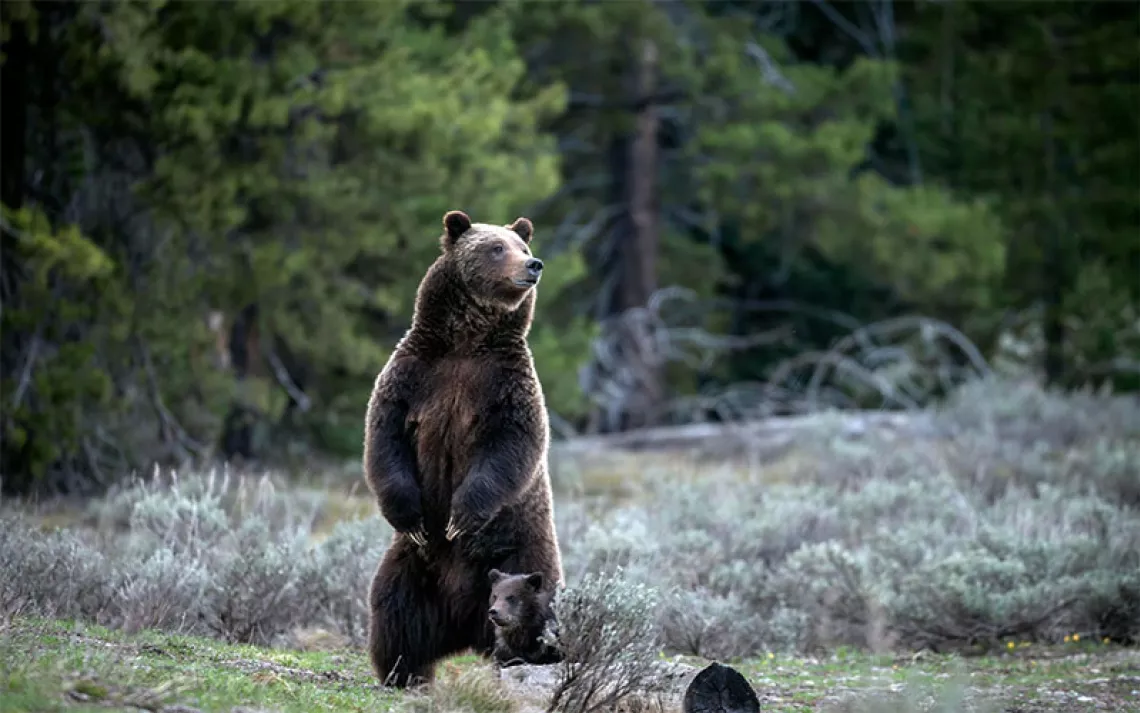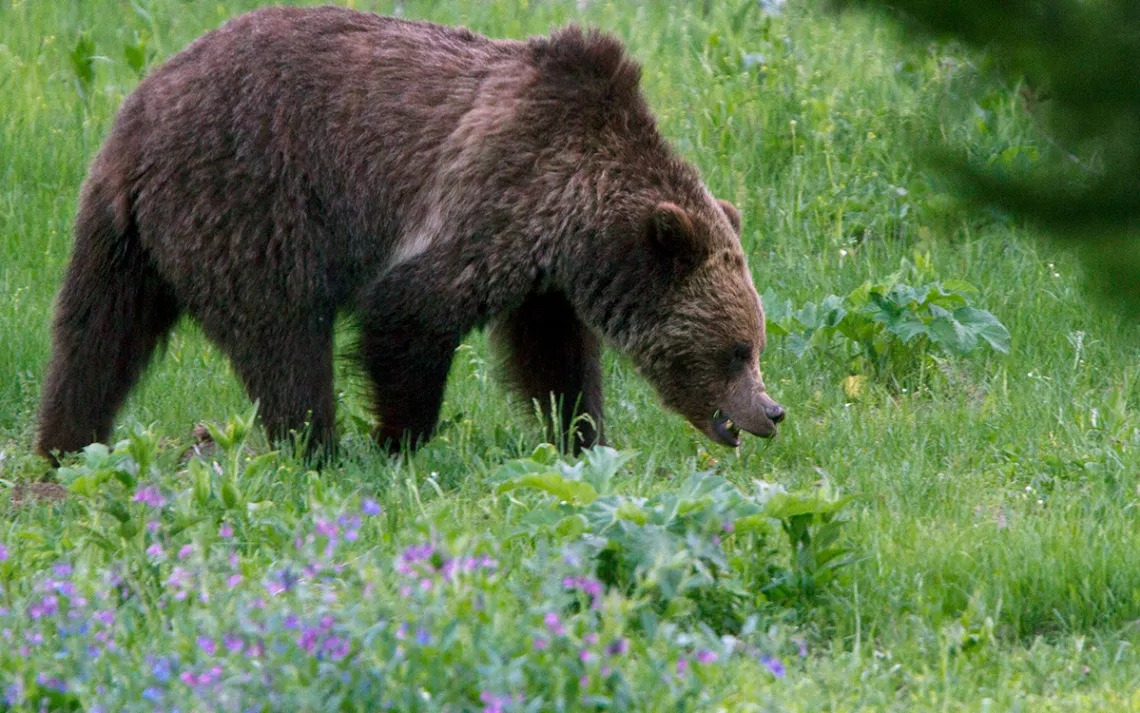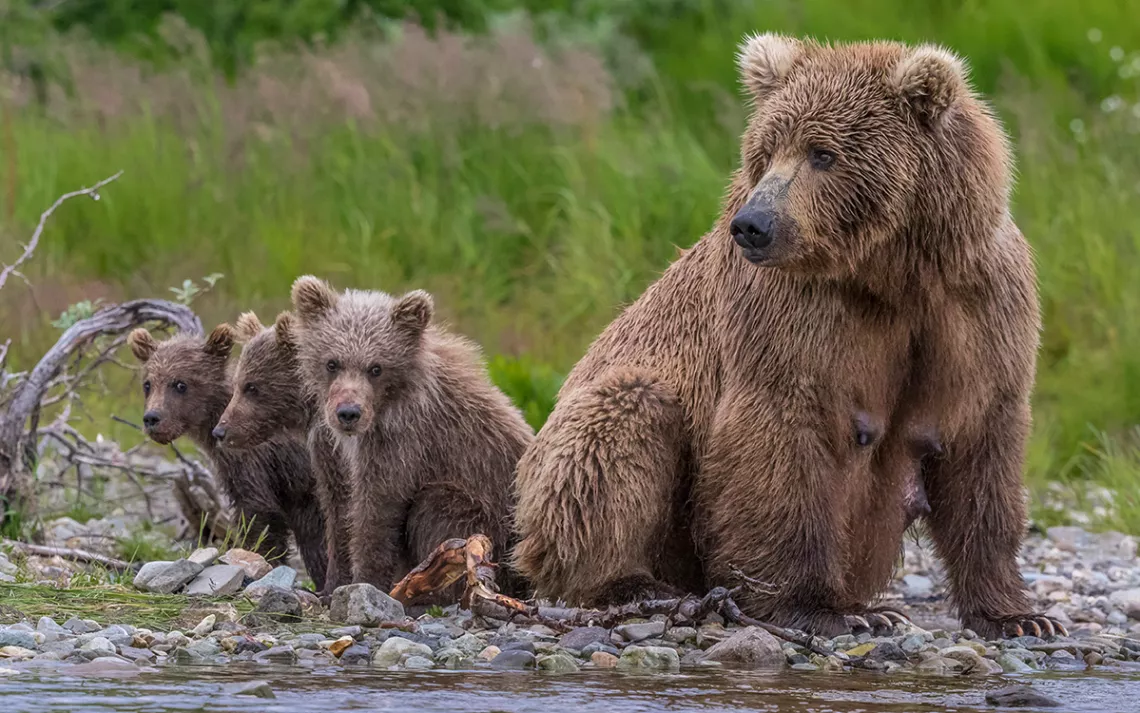Yellowstone Grizzlies Delisted
Trump administration removes ESA protections; trophy hunts likely to follow
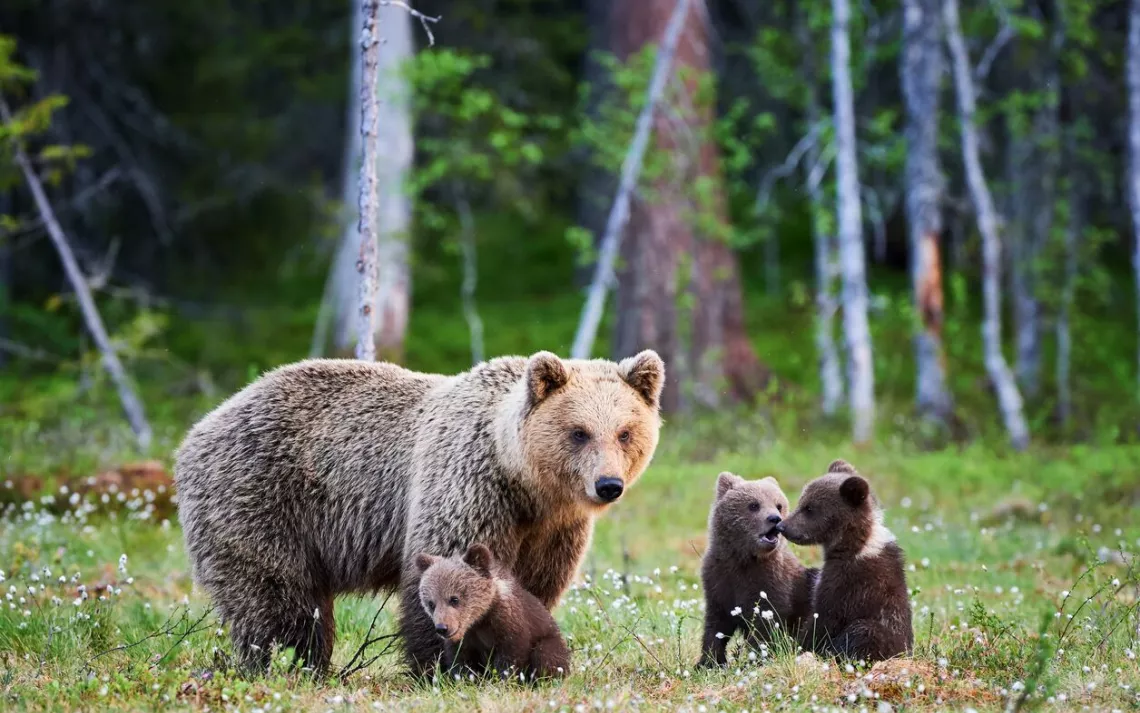
The U.S. Fish and Wildlife Service announced today that grizzly bears in and around Yellowstone National Park are being delisted as a threatened species under the Endangered Species Act. Management of grizzlies in the Greater Yellowstone Ecosystem will now be transferred to the states of Montana, Wyoming, and Idaho. Each state plans to open a limited hunting season on the bears.
Yellowstone grizzlies have made an impressive recovery from fewer than 150 bears when listed as threatened in 1975—including as few as 30 adult females—to around 700 today. It’s a testament to the value of the Endangered Species Act and the ability of Homo sapiens to coexist with large carnivores.
“This achievement stands as one of America’s great conservation successes; the culmination of decades of hard work and dedication on the part of state, tribal, federal, and private partners,” Secretary of the Interior Ryan Zinke said in a statement announcing the decision to remove the protections that made the achievement possible.
Environmentalists say that it’s way too soon. After several years of flat population numbers, grizzly counts in the Greater Yellowstone Ecosystem have declined for three consecutive years, from an estimated 757 in 2014 to 717 in 2015 to 690 this year.
Grizzlies were first delisted in 2007 but were relisted two years later after conservation groups, including the Sierra Club, successfully argued that the U.S. Fish and Wildlife Service had failed to consider the dwindling of whitebark pines, whose nuts are a key food source for Yellowstone bears. It’s the loss of whitebark pines (due to climate change and pine beetles) that some biologists argue is driving grizzlies farther into human-dominated landscapes in search of food. That’s where grizzlies end up being shot, hit by cars, or trapped by wildlife managers when they discover precious, easy-access calorie sources near people’s homes.
As a result, says Bonnie Rice of the Sierra Club’s Our Wild America campaign, “We’ve had record-high mortality the past few years.”
“The number of grizzlies continues to go down, and we’re very concerned about that,” she says. “It takes a decade or more to discern overall trends, and it’s important to maintain federal protections until we can see if that decline continues.”
Montana, Wyoming, and Idaho will manage grizzlies in their states starting in late July, with federal oversight for five years. While protections will loosen, the states are required to maintain populations at agreed-upon levels to avoid a return of federal management. Whether those levels are high enough is up for debate. The grizzly population would have to drop below 600—a loss of 100 bears—before trophy hunting and other “discretionary mortality” would be curtailed. The bottom line, according to Rice: “We’ll have fewer grizzly bears in a smaller area than what we have now.”
At the same time, growing numbers of bears have moved into areas around Yellowstone and Glacier National Parks that they haven’t inhabited in a century—and experience has shown that they can coexist peaceably with people. It requires a lifestyle adjustment—keeping pet food inside, granaries well secured, and animals and gardens enclosed in electric fencing—as well as a commitment from state wildlife agencies to put biologists on the ground to educate and assist residents. Without these efforts, grizzlies will have a difficult time surviving outside of national parks, where strict protections still apply.
Some advocates of delisting say that allowing a hunting season for grizzlies could help mitigate the resistance of some rural residents to greater bear numbers, as it seems to have done for wolves. Rice disagrees, pointing out that the states have historically had a hostile attitude toward management of large carnivores. “Let’s see how they manage grizzly bears first for several years,” she says, adding, “The Sierra Club is and always will be opposed to trophy hunting of grizzly bears.”
Conservationists are also concerned about the states’ lack of commitment to linkage zones and habitat connectivity. Currently, Yellowstone grizzlies live in a habitat island unconnected to other populations. Genetically linking them to the larger population in and around Glacier National Park is critical to their long-term health and survival. But bears outside the core demographic monitoring area in Yellowstone have little protection and aren’t counted toward population totals.
“You have occupied habitat right now outside those lines,” says Rice. “The state counts those as extra bears, and they can be completely eliminated.”
Many Native American tribes oppose today’s decision. More than 100 tribes have signed on to a Grizzly Treaty that opposes delisting and asks that grizzlies be restored on tribal lands in their historic habitat. As Ben Nuvamsa, former chairman of the Hopi tribe, recently told High Country News, “The grizzly bear, historically, is a religious icon to virtually all tribal nations in the United States and Canada. There is not one tribe that does not hold the bear in high regard and does not include the bear in its ceremonies.”
Before grizzlies are delisted, Rice says, the Sierra Club wants to see “a connected and well-distributed population of several thousand grizzly bears in the recovery areas in the Lower 48. Yellowstone is completely isolated. The Cabinet-Yaak and Selkirk populations are hanging on by a thread. There are no bears in the Selway-Bitterroot. There’s a couple bears, maybe, in the North Cascades.”
“We want to see a connected population in the Lower 48. That’s our vision for recovery. And we are a long way from that.”
 The Magazine of The Sierra Club
The Magazine of The Sierra Club
